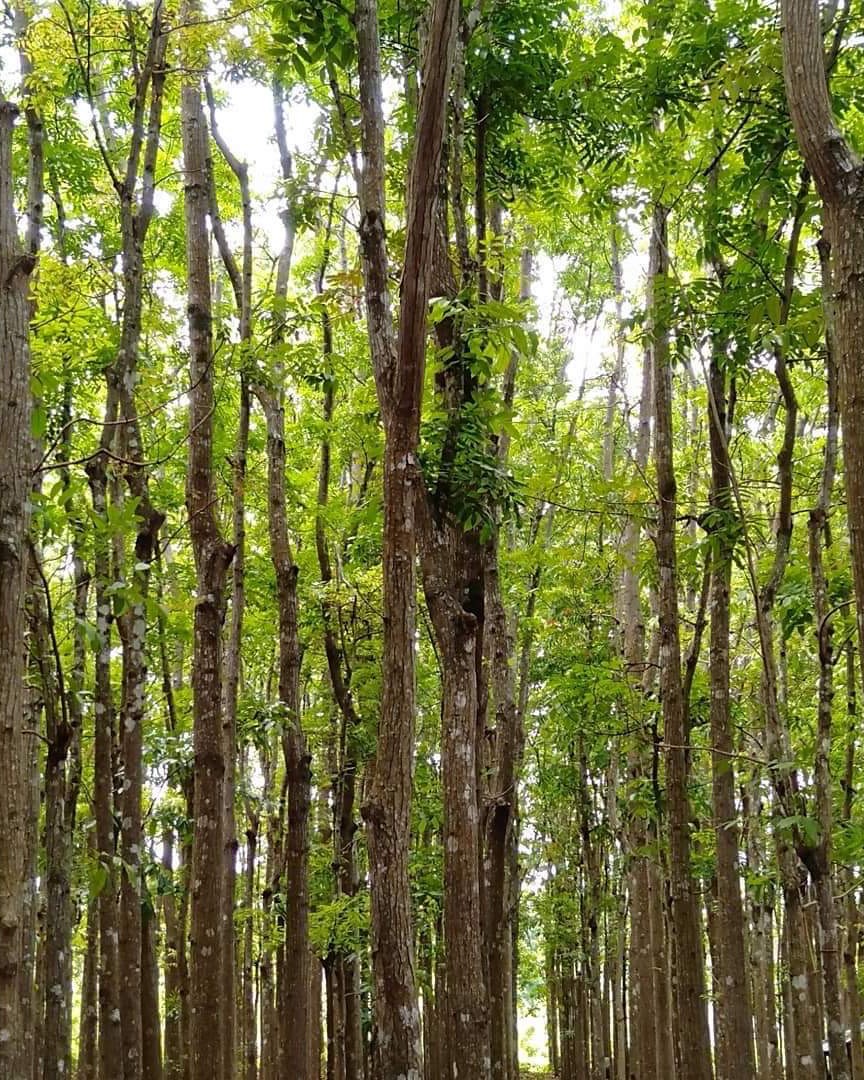Melia dubia (Indian Mahogany)
- Family: Full Sun
- Local Names: Bengali (mahanim,mahnim,bakarjan,ghora nim), Cantonese (mindi kechil), English (China berry,China tree,Persian lilac,pride of China,pride of India,syringa,azedarach,white cedar,bead tree), Filipino (paraiso,bagaluñga,balagañgo), French (lilas des Antille)
Description
1. Melia azedarach is a deciduous tree up to 45 m tall; bole fluted below when old, up to 30-60 (max. 120) cm in diameter, with a spreading crown and sparsely branched limbs. Bark smooth, greenish-brown when young, turning grey and fissured with age.
2. Leaves alternate, 20-40 cm long, bipinnate or occasionally tripinnate. Leaflets 3-11, serrate and with a pungent odour when crushed.
3. Inflorescence a long, axillary panicle up to 20 cm long; flowers showy, fragrant, numerous on slender stalks, white to lilac; sepals 5-lobed, 1 cm long; petals 5-lobed, 0.9 cm long, pubescent; staminal tube deep purple blue, 0.5 cm long, 1 cm across.
4. Fruit a small, yellow drupe, nearly round, about 15 mm in diameter, smooth and becoming a little shrivelled, slightly fleshy. Seed oblongoid, 3.5 mm x 1.6 mm, smooth, brown and surrounded by pulp.
Ecology
A tree of the subtropical climatic zone, the natural habitat of M. azedarach is seasonal forest, including bamboo thickets, Tamarindus woodland. It is highly adaptable and tolerates a wide range of conditions; for example, the most frost-tolerant cultivars can be planted outdoors in sheltered areas in the British Isles.
Native range
Bangladesh, India, Indonesia, Laos, Malaysia, Myanmar, Nepal, Pakistan, Papua New Guinea, Sri Lanka, Thailand, Vietnam
Tree Management
1. Under optimal conditions, M. azedarach grows fast. It is generally deciduous, but some forms in the humid tropics (e.g. in Malaysia and Tonga) are evergreen. Does not coppice well from large stumps, but excellent coppice is obtained from trees up to a girth of 0.9 m. The tree resprouts after cutting and regrows after pollarding, making it suitable for pole production.
2. Seed storage behaviour is orthodox. Viability is maintained for 1-3 years in hermetic storage at room temperature with 11-15 % mc. There are 470-2800 seeds/kg.
3. A tree of the subtropical climatic zone, the natural habitat of M. azedarach is seasonal forest, including bamboo thickets, Tamarindus woodland. It is highly adaptable and tolerates a wide range of conditions; for example, the most frost-tolerant cultivars can be planted outdoors in sheltered areas in the British Isles.
4. Fruit drop is limited, and ripe fruit clings to the branches for several months even after the leaves have fallen. Propagation is by direct sowing or by planting out seedlings or stumps; 85% germination may be expected in 2 months.
Timber
Melia dubia wood (the ‘white cedar’ of commerce), which resembles mahogany, is used to manufacture agricultural implements, furniture, plywood, boxes, poles, tool handles; it is used in cabinet making and in construction because of its resistance to termites. The density is 510-660 kg/cubic m.
Shade or Shelter
Widely planted as a shade tree in coffee and abaca (Musa textilis) plantations.
Medicine
Melia dubia is well known for its medicinal uses. Its various parts have antihelmintic, antimalarial, cathartic, emetic and emmenagogic properties and are also used to treat skin diseases. Dried ripe fruit is used as an external parasiticide; some toxic components are found in the seed oil, the oral intake of which may cause severe reactions and even death.
Gum or Resin


